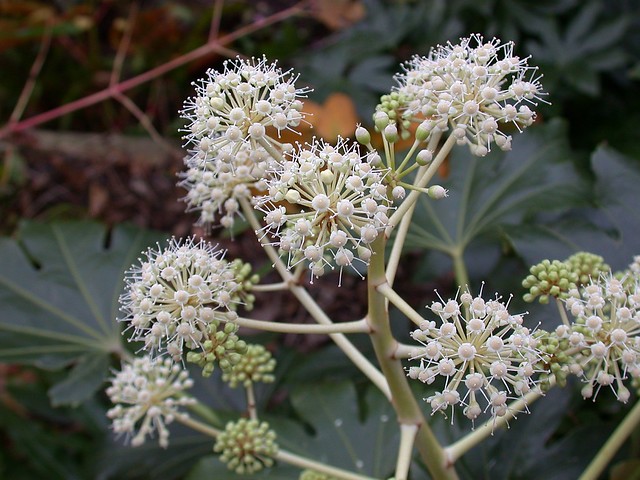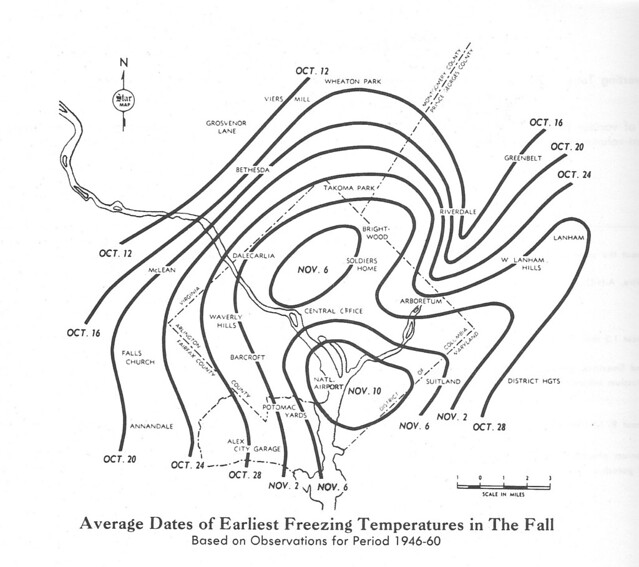
Begonias, in for the evening
Last night, I piled some of my begonias into a plant tray and brought them indoors for safekeeping. There was a forecast of near-freezing temperatures and near-certainty of frost, but this time of year I always gamble a bit, bringing in just my most tender or irreplaceable plants, and leaving the rest to their fates. We may be well into November but I'm not quite ready yet for the annual routine of lugging potted plants in, and putting sheets over the plants I can't bring in, every time a frost is predicted. It's just too damn much work (have I mentioned before how lazy I am?).
As it turned out, the suburbs had a hard freeze but the city remained well above freezing; there was a very light and spotty frost this morning, but none of my plants appear to be damaged. The forecast shows no sign of another frost well into next week, so I can breathe easily for at least a few more days and maybe put off my fall garden cleanup for yet another weekend!
 Fatsia japonica, a fall bloomer
Fatsia japonica, a fall bloomerOne advantage of living in a city, for a gardener at least, is the urban heat island effect; last night it saved my lazy butt yet again. The urban heat island helps moderate winter lows, and usually pushes the first freeze significantly later than in the outlying suburbs. (The disadvantage is that it makes our summers hotter as well.) I'm never in a hurry to break down my garden because if I can squeak by that first frost, I'll often see another week or two of above-freezing temperatures when my garden continues to look good. Many true tropicals, like coleus and caladiums, start to look sad as soon as nights turn the least bit chilly, but many of the hardier subtropicals, like elephant ears, bananas, and begonias, will look good right up until a hard freeze. Some years that's late November or even early December. The down side is that I sometimes end up cleaning up the garden in December! And by then, why not just put it off until spring?

Date of first freeze at DCA and Dulles since 1963 Source: Washington Post)
The average date of DC's first freeze has been creeping later and later over the years, and is now nearly 4 weeks later than it was 50 years ago. First freezes are coming later in the suburbs as well, but the difference hasn't been as pronounced. Combined with warmer springs, my growing season can be anywhere from 2-7 weeks longer than areas outside the Beltway. This is especially nice in the fall, when I get to enjoy my garden for a few more weeks while everybody else is scrambling to put theirs to bed for the winter!
While the average freeze dates may be changing, the difference between the city and the suburbs isn't anything new. A map prepared for The Washington Star Garden Book (now hopelessly out of date, but still an excellent local reference) shows that even before 1960, areas in the heart of the city had a first freeze date 4 weeks later than areas outside the city.
Source: The Washington Star Garden Book (Deborah R. Fialka, 1988 edition.)
For now, I'll sit back and enjoy my lazy weekend. On a bittersweet note, today marks exactly one year since my suffered a massive stroke. While we're fortunate he's still alive, and he has made a huge amount of progress in the last year, this has had an enormous impact on my father and my entire family. Here's what I wrote when I was in Buffalo during that awful week immediately after his stroke: The roots of a gardener.


Plots may be smaller in the towns and cities but advantage of urban heat island makes up for it!
ReplyDeleteBut how I would love to have just a bit more space...
ReplyDelete